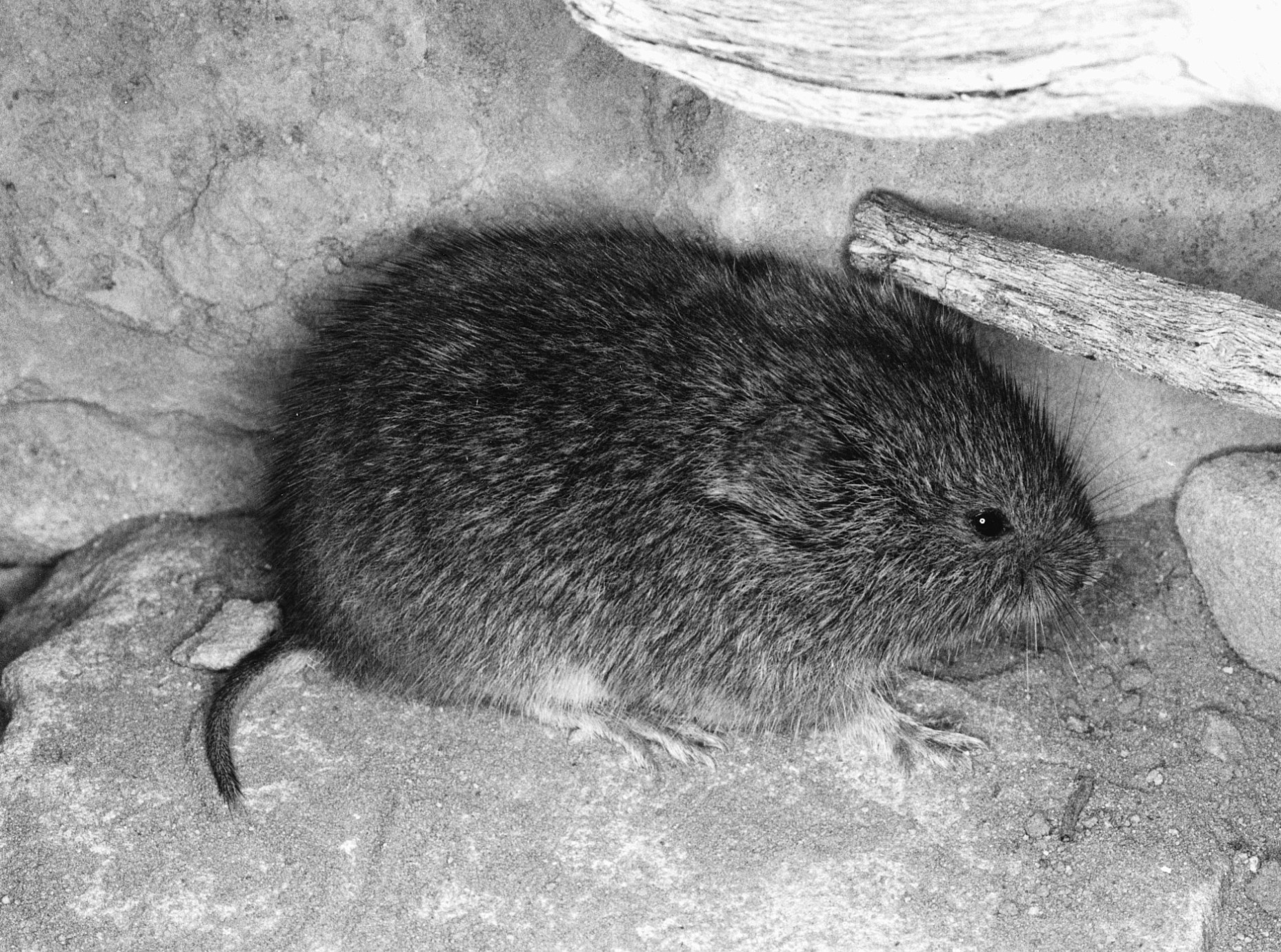MOGOLLON VOLE
Microtus mogollonensis (Mearns 1890)
Order Rodentia : Family Cricetidae
DESCRIPTION. A small vole with short tail, brown color, and only four mammary glands; tail usually <35 mm in length, less than twice as long as hind foot; pelage long and fluffy; upperparts dull umber brown, underparts buffy gray, feet and tail brownish gray. Dental formula: I 1/1, C 0/0, Pm 0/0, M 3/3 × 2 = 16. Averages for external measurements: total length, 141 mm; tail, 32 mm; hind foot, 21 mm. Weight, 29–48 g.

DISTRIBUTION. Restricted in Texas to the higher elevations of the Guadalupe Mountains in Culberson County.

SUBSPECIES. Microtus m. guadalupensis.
HABITS. In the Guadalupe Mountains of western Texas the mogollon voles live in colonies in grassy openings of yellow pine forest, especially in the vicinity of old logs that are partly decayed and well bedded in the soil. Their numerous, well-defined runways meander through the tall grass, radiating from the logs under which the voles live and rear their families. They also occur on open ridges where their runways wind about among stones, under shinnery oaks, and even into the edge of dry woods.
Their globular nests of dried grasses and herbs are placed in dense clumps of vegetation aboveground, in hollowed-out places under logs, or in special underground chambers of their burrows. One located under a log was cup shaped, rather than globular, about 10 cm in diameter, and contained four small voles.
Trapping records indicate that these voles are more active in the daytime than are most small mammals, especially in places where adequate ground cover offers concealment. More than 90% of a series trapped in the Guadalupe Mountains were caught in the daytime, although the traps were kept set day and night. Their food is almost entirely vegetation, the green parts of grasses and herbs in summer and the basal portions, roots, bulbs, and bark in winter. There is no evidence that they store food other than the small piles of cut vegetation seen along their trails and at their feeding stations.
Breeding probably continues through most of the year, with an interval of about 30–40
days between litters. Pregnant females have been trapped in every month from May to
October. The size of litters, based on embryo counts, ranges from two to five, averaging
three. At birth, the young are nearly naked, blind, and helpless. They develop rapidly
as indicated by the records of young females that were sexually mature and pregnant
and in the "black" juvenile pelage (probably <6 weeks old), weighing slightly >20
g.
In Texas, these voles are restricted to the high parts of the Guadalupe Mountains
and are of no economic importance except as food for furbearers and other carnivores.
Their remains have been identified in droppings of gray fox, bobcat, badger, coyote,
and skunk.
POPULATION STATUS. Uncommon. The mogollon vole is restricted to the confines of the Guadalupe Mountains National Park.
CONSERVATION STATUS. The IUCN lists the mogollon vole as a species of least concern, and it does not appear on the federal or state lists of concerned species. The species remains in good shape in Texas, but it could be threatened by a catastrophic local event such as a massive forest fire within the park.
REMARKS. Formerly known as the Mexican vole, M. mexicanus. We have followed the work of Jennifer Frey (New Mexico State University) who in 1993 suggested that the US population of this vole is actually a distinct species from the populations in Mexico.
From The Mammals of Texas, Seventh Edition by David J. Schmidly and Robert D. Bradley, copyright © 1994, 2004, 2016. Courtesy of the University of Texas Press.
Natural Science Research Laboratory
-
Address
Museum of Texas Tech University, 3301 4th street, Lubbock, TX 79409 -
Phone
806.742.2486 -
Email
nsrl.museum@ttu.edu

